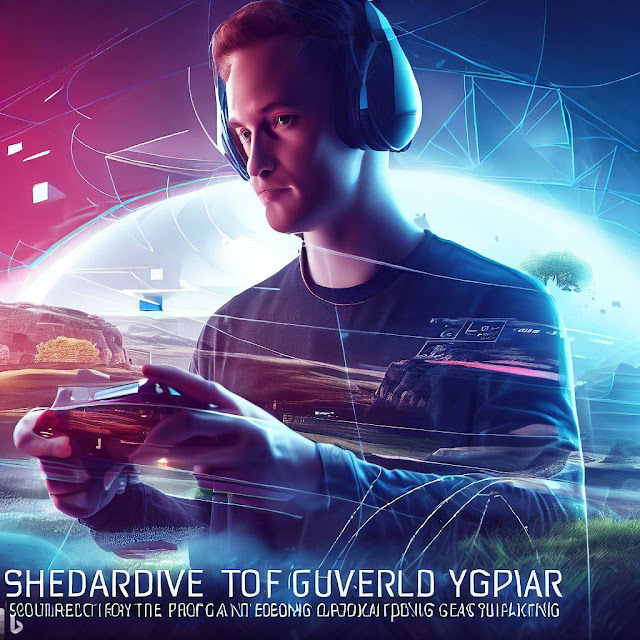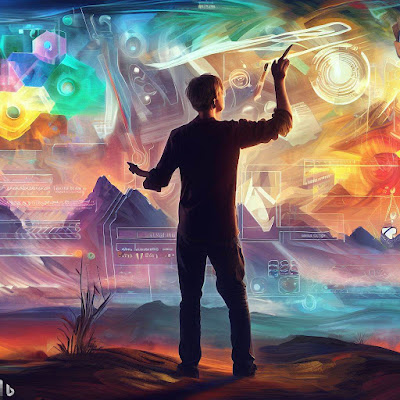Search This Blog
Talk related Game design, Development, Importance of every element in game.
Featured
- Get link
- X
- Other Apps
Shaping Tomorrow's Gaming Landscape: The Future of Game Development, Design, and the Evolving Role of UI/UX
Shaping Tomorrow's Gaming Landscape: The Future of Game Development, Design, and the Evolving Role of UI/UX
Introduction:
The world of game development is on the cusp of
unprecedented innovation, fueled by technological advancements, creative
exploration, and player demands. As we peer into the future, we uncover
exciting possibilities that will reshape how games are created and experienced.
In this blog, we'll delve into the future of game development and design and
explore how these changes will impact User Interface (UI) and User Experience
(UX) design.
Technological Breakthroughs and Game Design:
The future promises even more immersive experiences through
technologies like virtual reality (VR), augmented reality (AR), and artificial
intelligence (AI). These innovations will blur the line between reality and
virtual worlds, redefining how games are designed and consumed.
AI-Driven Dynamic Gameplay:
AI-powered procedural generation will enable dynamic
gameplay experiences tailored to each player's preferences. Games like "No
Man's Sky" already employ procedural generation to create vast, explorable
universes.
Personalization and Player-Centric Design:
The future will see game development emphasizing
player-centric experiences, allowing players to influence narratives and
outcomes. "Detroit: Become Human" showcases the potential of
branching narratives and tailored experiences.
Good UI/UX Example: "The Last of Us Part II"
(Naughty Dog) features an accessible mode that caters to players with various
disabilities, highlighting the importance of inclusive design.
Bad UI/UX Example: "Anthem" (BioWare) suffered
from cluttered UI and cumbersome navigation, negatively impacting player
engagement.
Virtual Reality and Augmented Reality Integration:
VR and AR will revolutionize UI/UX design, enabling players
to interact with digital worlds through natural gestures and movements.
Ethics and Social Impact in Game Design:
Game developers will increasingly address ethical
considerations and social impact, infusing narratives with deeper meaning and
raising awareness about real-world issues.
Cross-Platform Play and UI/UX Challenges:
The future of gaming will further embrace cross-platform
play, necessitating UI/UX design that seamlessly transitions between devices
and ensures equitable experiences.
Journal Article: Chittaro, L., & Ranon, R. (2017).
Interaction design and gamification in health: Fitness and persuasion as
motivating factors to use exergames. Entertainment Computing, 20, 63-73.
Research Paper: Drachen, A., Sifa, R., Bauckhage, C., &
Thurau, C. (2012). Guns, swords, and data: Clustering of player behavior in
computer games in the wild. In Proceedings of the international conference on
entertainment computing (pp. 286-294).
Innovations in UI/UX Design:
UI/UX design will evolve to provide seamless experiences
across diverse platforms, catering to accessibility needs and cultural
sensitivities.
Conclusion:
The future of game development is brimming with exciting
prospects, from AI-driven dynamic gameplay to immersive VR experiences. As
technology evolves, so will UI/UX design, enabling more intuitive interactions
and inclusive experiences. The lessons learned from past successes and failures
will guide developers toward creating games that captivate players on a whole
new level. As gamers, we're on the cusp of a thrilling era that promises to
redefine how we play, experience, and interact with the digital world.
References:
"No Man's Sky" (Hello Games, 2016).
"Detroit: Become Human" (Quantic Dream, 2018).
"The Last of Us Part II" (Naughty Dog, 2020).
"Anthem" (BioWare, 2019).
- Get link
- X
- Other Apps
Popular Posts
The Crucial Role Played by UI/UX Designers in the Gaming Industry
- Get link
- X
- Other Apps
Mass Effect: Andromeda - Unraveling the Missteps and UI/UX Misadventures
- Get link
- X
- Other Apps
Navigating Game Development Challenges: A Comparative Analysis of UI/UX for Different Platforms
- Get link
- X
- Other Apps




Comments
Post a Comment